Android Central Verdict
Bottom line: The cheaper of the two Galaxy Watch models, the Galaxy Watch 4, has everything you want from a fitness smartwatch but lacks the stainless steel heft and rotating bezel of the more expensive Watch 4 Classic. But if you want the green colorway, which is lovely, the Watch 4 is your only option. The Galaxy Watch 4 Classic was the true flagship of the Samsung wearable lineup with a stainless steel build and rotating bezel, plus all the great performance, health tracking, and longevity of the Galaxy Watch 4. The Galaxy Watch 5 Pro has supplanted it, but you don't get the Classic's rotating bezel.
Pros
- +
Better price than Galaxy Watch 5
- +
Performance and battery life not far behind GW5
- +
Comprehensive health tracking features
- +
Wear OS 3 offers access to Google services
- +
Included band is comfortable
Cons
- -
Capacitive gesture navigation is finicky
- -
Occasional tension between Samsung and Google services
- -
Now supplanted by Galaxy Watch 5 and Pixel Watch
Why you can trust Android Central
On the surface, the Samsung Galaxy Watch 4 wasn't the "this changes everything" device many hoped for. But the watch proved to be more than the sum of its parts. It represented the coming together of two capable but flawed parties trying in earnest to solve an intractable problem: the floundering, belly-up state of Android smartwatches at the time.
When Google and Samsung co-announced their partnership in May 2021, the former yielded some control of its OS to the Korean company, and the latter committed to replacing Tizen with Wear OS 3 on all future smartwatches. Still, it wasn't clear whether it would yield positive results for the entire industry or just, well, Samsung.
Since that point, Samsung has released two successful smartwatches in the Galaxy Watch 4 and Galaxy Watch 5, while Google piggybacked off of Samsung's silicon and software to finally release its own Pixel Watch. Add in new software for other brands like Fossil and Mobvoi, and it's clear that the current state of the Android watch ecosystem grew from this nexus point.
As important as the Galaxy Watch 4 was, that doesn't answer the question of its relevancy today. Its position for best Android smartwatch has since been supplanted by the Galaxy Watch 5, and the watch does have its flaws. Still, outside of Samsung's own watches and the new Pixel Watch, it still has no proper rivals over a year later.
Samsung Galaxy Watch 4: Price and availability
Announced on August 11, 2021, and released August 27 of that year, the Samsung Galaxy Watch 4 and 4 Classic launched at $250 and $350, respectively, in their smaller 40mm and 42mm variants. They also shipped in larger 44mm and 46mm variants for a $30 surcharge, plus an extra $30 for the 4G LTE upgrade.
Since the launch of the Galaxy Watch 5, the Galaxy Watch 4 has gone down in price, but also appears to be running low on stock in certain sizes. Currently, Samsung only has the 40mm and 46mm versions in stock; other retailers have the 44mm version, but not the 42mm Classic.
Also, special editions like the Maison Kitsuné and Galaxy Watch 4 Classic Thome Browne edition are now out of stock.
Get the latest news from Android Central, your trusted companion in the world of Android
If you're buying the larger version of the aluminum Watch 4, do yourself a favor and get the green one.
Basically, if you're going to buy a Galaxy Watch 4, now seems to be the time. The non-Classic version is still discounted through the holidays, but we don't know how long it'll remain available alongside the Galaxy Watch 5. And outside of Samsung's site, most retailers are only selling the Galaxy Watch 4 Classic as refurbished.
Made of lighter aluminum, the Watch 4 comes in four colors: Pink Gold (40mm only), Silver, Black, and Green (44mm only). Our personal favorite is the Green finish, so you may want to choose the larger display for the best style. The Watch 4 Classic is limited to the more muted Silver or Black options in both sizes.
Samsung Galaxy Watch 4: Hardware and design

Given Samsung's iterative approach to hardware design over the past few years, it's no surprise that the Watch 4 looks like the Watch Active 2 and the Watch 4 Classic looks like the Watch 3. The names might be confusing, but there's a continuity here that I appreciate.
I reviewed the larger versions of both watches, and each of them comes with 20mm sport bands made of fluoroelastomer, a synthesized rubber that's generally comfortable and doesn't irritate the skin. (For some reason, the Classic comes with a ridged sport band with a traditional watch clasp, while the cheaper Watch 4 comes with a straighter band that terminates in the kind of loop clasp Apple popularized with the Apple Watch.)
The good news is that, unlike the Apple Watch, the lugs support any quick-release watch strap, and I got to work replacing the sport band on the Classic with a lovely blue leather band from an old Victorinox I still wear from time to time. You can also pair Galaxy Watch 5 bands with the Galaxy Watch 4, if you prefer having more options.
| Header Cell - Column 0 | Samsung Galaxy Watch 4 | Samsung Galaxy Watch 4 Classic |
|---|---|---|
| Size | 44.4 x 43.3 x 9.8mm 40.4 x 39.3 x 9.8mm | 45.5 x 45.5 x 11.0mm 41.5 x 41.5 x 11.2mm |
| Weight | 30.3g (44mm) 25.9g (40mm) | 52g (44mm) 46.5g (40mm) |
| Display | Super AMOLED 1.4-inch (330ppi) Super AMOLED 1.2-inch (330ppi) | Super AMOLED 1.4-inch (330ppi) Super AMOLED 1.2-inch (330ppi) |
| Material | Aluminum case | Stainless steel case |
| Operating System | Wear OS Powered by Samsung | Wear OS Powered by Samsung |
| Processor | Exynos W920 (5nm) | Exynos W920 (5nm) |
| Memory | 1.5GB RAM 16GB storage | 1.5GB RAM 16GB storage |
| Battery | 361mAh 247mAh | 361mAh 247mAh |
| Sensors | Accelerometer Barometer Gyro Geomagnetic Light BioActive Sensor (heart rate) ECG BIA | Accelerometer Barometer Gyro Geomagnetic Light BioActive Sensor (heart rate) ECG BIA |
| Connectivity | LTE Bluetooth 5.0 Wi-Fi NFC GPS | LTE Bluetooth 5.0 Wi-Fi NFC GPS |
| Durability | 5ATM IP68 MIL-STD-810G | 5ATM IP68 MIL-STD-810G |
| Colors | Green Black Silver Pink Gold | Black Silver |
| Band size | 20mm 20mm | 20mm 20mm |
The protruding lugs look fantastic paired with a traditional band, but the fact that they curve down and inwards puts a pretty sizeable gap between the watch's side and your wrist, a necessary sleight of hand to ensure the watch's bulbous 3-in-1 health sensor makes solid contact with your wrist.
The digital crown has its virtues, but there's still nothing like using Samsung's rotating bezel to navigate around Wear OS.
If you can spring for the more expensive Classic model, go for it. While the stainless steel makes it a bit heavier than the Watch 4's aluminum, the tradeoff is worth it for the rotating bezel; there just isn't anything else like it. I love a good rotating crown, but there's something just so satisfying about whizzing through notifications, tiles, and menus without tapping the display at all. It's a shame that the Galaxy Watch 5 Pro abandoned this design for a more "Active" look.
The Watch 4 uses a hack of sorts, one that debuted on the Watch Active 2, to emulate the same thing — it dedicates a portion of the OLED display's edge for gesture navigation — but it's finicky and can still block content. However, a September 2021 update improved the capacitive bezel's responsiveness on the Watch 4.
The OLED display on each watch is, as usual, pretty great — Samsung doesn't mess around in this regard. But I was kind of surprised to see that, in addition to making each panel slightly brighter, which improves direct sunlight visibility, both sizes are sharper than their predecessors. In fact, the larger Watch 4 and 4 Classic, which share the same 1.4-inch panels, are nearly twice as sharp as the Watch 3 and Watch Active 2, which translates into more legible text at smaller sizes and less aliasing around images. And the newer Galaxy Watch 5 has the same pixels per inch, so you haven't lost a step.
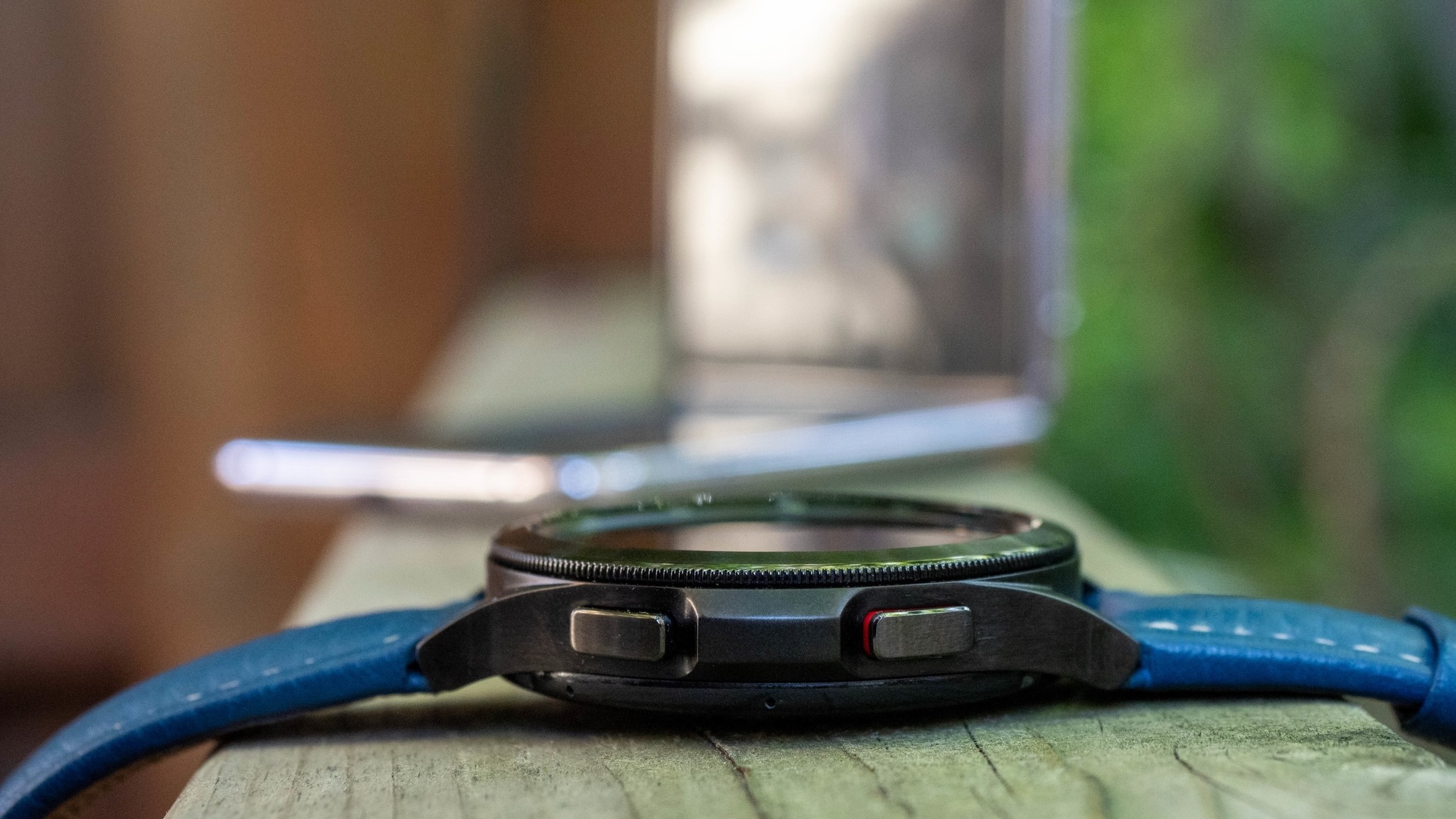
The side of each watch has two buttons that pull triple duty depending on the situation. A single press of the top button always goes home; the same action on the bottom button returns to the previous screen (which is often home because most apps aren't that deep). Holding the top button activates Bixby or the power menu; holding the bottom always brings up Samsung Pay.
Samsung also improved the haptics in the Galaxy Watch 4 series, but they're still not as good as the Apple Watch.
Each button also has electrodes that pair with the BioActive sensor to pulse mild electrical signals through your body to produce ECG or BIA readings, which is why at least compared to the Galaxy Watch 3, they look more utilitarian than the traditional chronometer style of the previous watch.
I'm also impressed by the haptic motor inside the Watch 4. Samsung's previous smartwatches were known for buzzy and sloppy vibrations, but Samsung's included a higher-quality linear motor on the Watch 4 that, while not used nearly as well utilized as on the Apple Watch, is much easier to endure buzzing against your wrist dozens of times a day.
Samsung Galaxy Watch 4: Software and performance
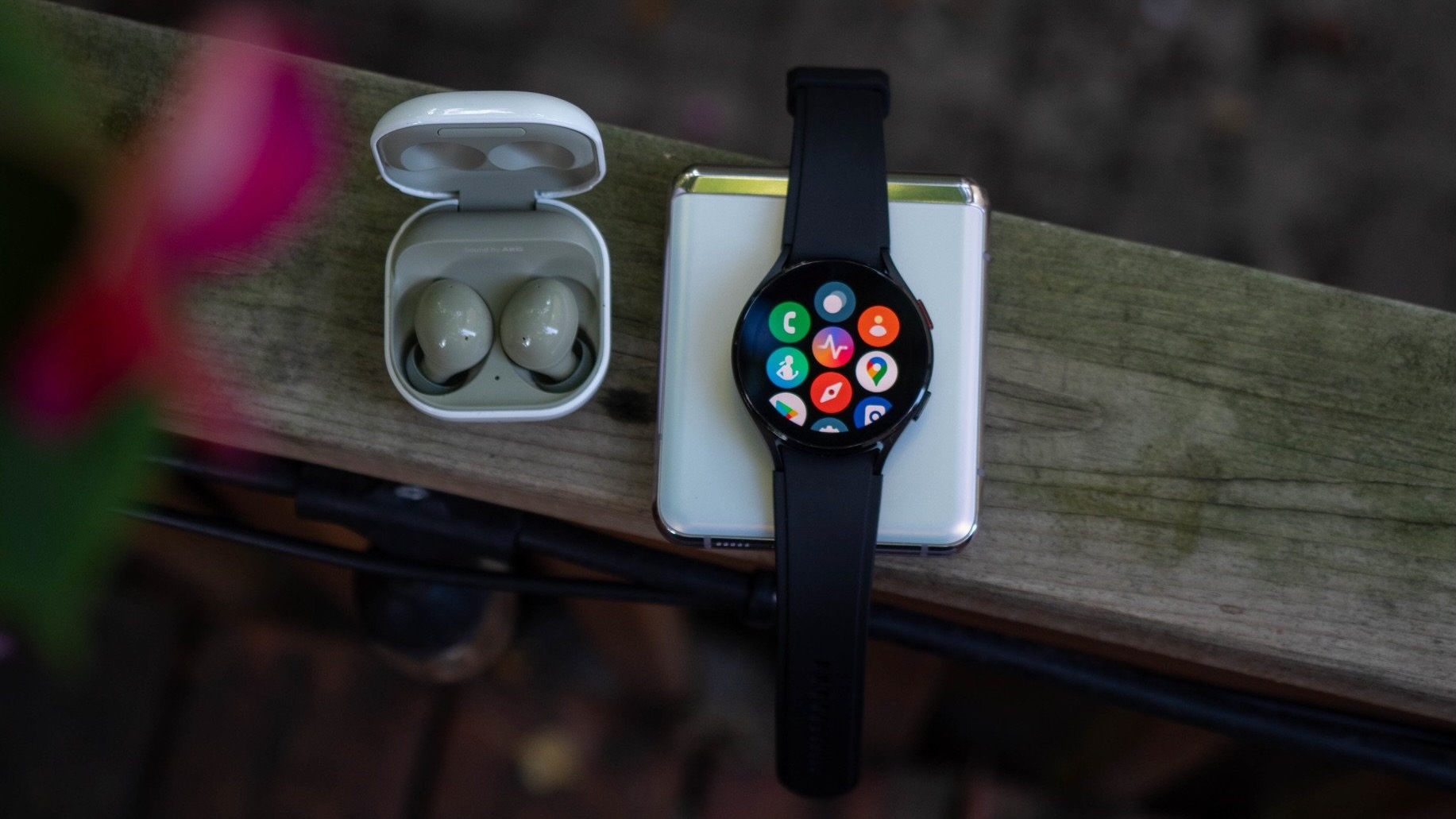
I think there are two primary things people want to know about the Galaxy Watch 4 and, separately, about Wear OS 3: does Samsung's watch platform benefit from its transition to Wear OS, and is Wear OS as a whole considerably better than it used to be?
The first I can answer confidently: yes. Samsung has tried to recreate as much of its Tizen-based UI flow as possible, so existing users won't feel alienated while benefiting from access to the Play Store and some general Wear OS niceties. Notifications still live on the far left of the navigation, with older ones accruing further and further from the main watch face. The quick settings menu still lives at the top, and app "tiles" comprise the real estate to the right of the home screen, just as they did on Tizen. The main functional difference between Tizen and Wear OS 3 is the inclusion of a launcher at the bottom of the workflow, an app cloud very similar to the Apple Watch, and every bit as frustrating to use.
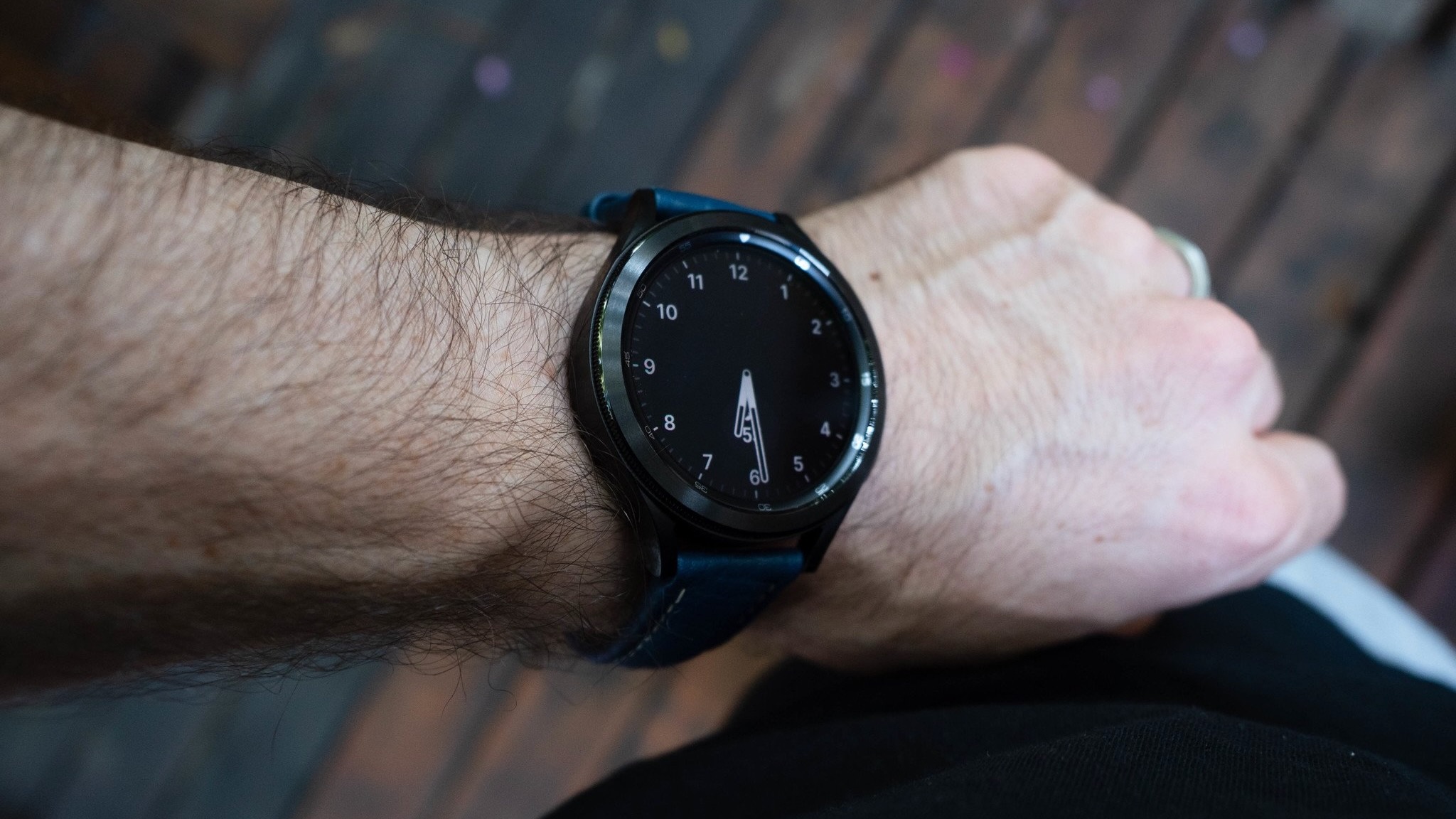
I encourage you not to overthink Wear OS on the Galaxy Watch; as I said initially, this isn't the massive reinvention many people wanted or were expecting. Instead, it is very much Samsung's existing wearable experience with access to Google's apps and the admittedly limited selection of Wear OS apps on the Play Store. You also gain better notifications than on Tizen, since Wear OS is so closely tied to Android's core notification framework, but the real upgrades are being able to open Google Maps for turn-by-turn navigation or use Google Keep to check off groceries from a shopping list as you wander through the chips aisle (I see you, and I support your decisions).
Don't overthink Wear OS on the Galaxy Watch; it feels very much like Tizen but with access to Google apps and services.
You also get, or at least will get when they're released, updated versions of Spotify, Strava, Calm, and others that either didn't exist on Samsung's existing platform or were severely underdeveloped. Samsung is betting that developers are more likely to build a decent Wear OS companion app because it's an extension of an existing Android experience, and Google is hoping (praying) that more developers will be willing to build those apps because millions of Samsung phone owners will be wearing Wear OS watches. We'll see how it will all play out soon enough.
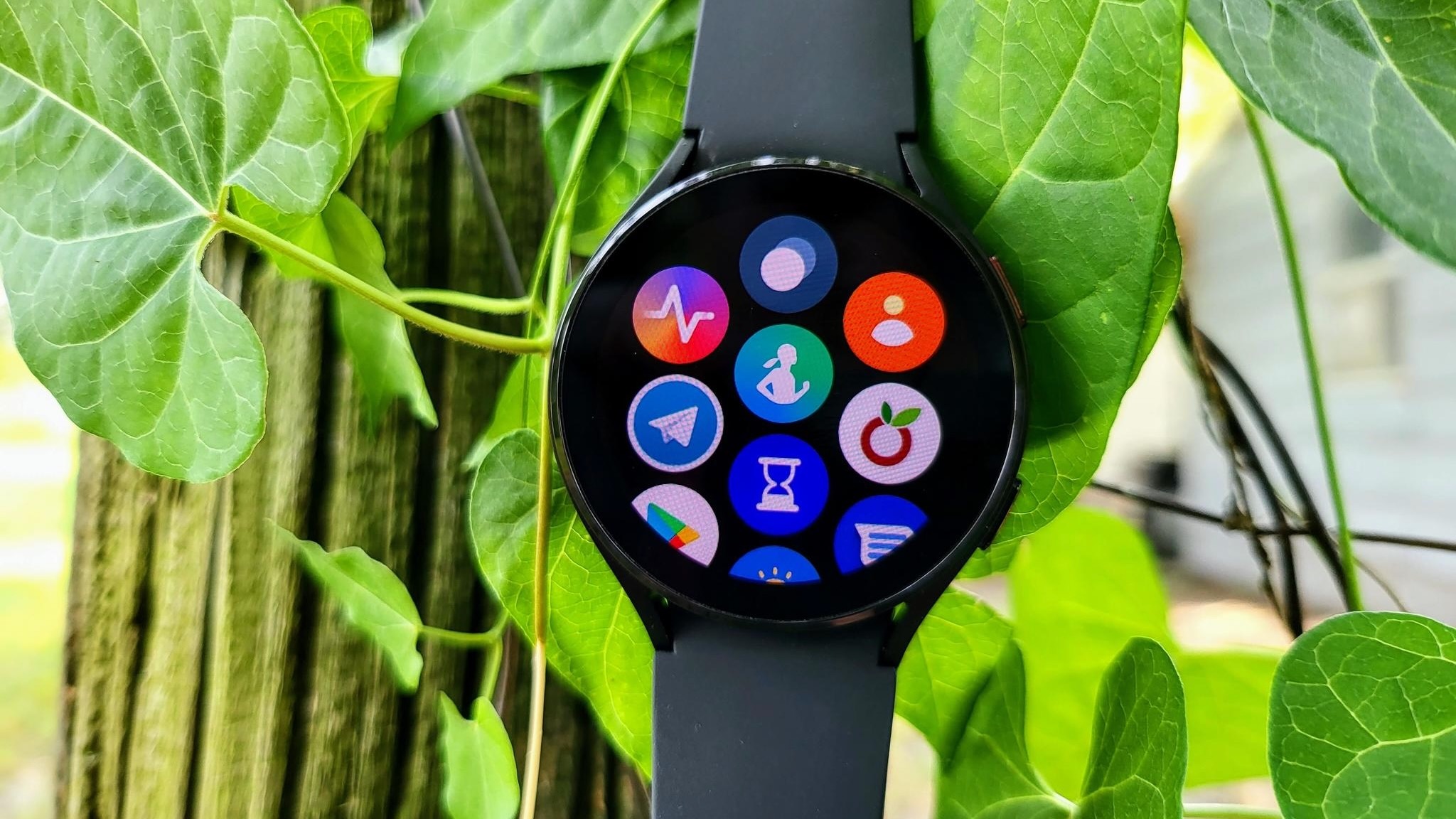
Galaxy Watch 4 owners also benefit from a feature Google recently added to Wear OS called Tiles. Think of Tiles as widgets that live to the right of the watch face providing quick access to information or app actions, checking the weather, starting a timer, or beginning a workout without having to open an app. While the Tile API is still in alpha and isn't available to all developers, Google said during its recent developer conference that it's working with dozens of companies to build Tiles into their Wear OS apps. It's honestly one of the best additions to the platform (though it's also being backported to Wear OS 2).
Another welcome feature of Wear OS is custom watch faces. While the ones included on the Watch 4 are quite lovely and varied and Samsung continues to add new options as it did in the February 2022 update. You can also download apps like Facer, which lets you pay for premium options from artists and designers, or Pujie Black, where you can design your own.
Thanks to the new Galaxy Watch 5 and its One UI Watch 4.5 software, Samsung brought new watch faces like Info Board, Pro analog, Digital Neon, Analog Utility, Kinetic Digits, and Flower Garden to the Galaxy Watch 4. More importantly, it added improved accessibility features and a full QWERTY keyboard for messaging friends without needing to pull out your phone. And you can expect another couple of years of new software features, thankfully.

For the most part, this is very much a Samsung-first experience. But Samsung finally added Google Assistant on the Galaxy Watch 4 almost a year after its initial release, a huge relief for users who prefer that smart assistant to Bixby.
Hidden deep in the settings is the ability to install a custom launcher, much like you can on your phone. You'll also be able to select a new default health services provider, too, which could mean turning shifting from Samsung Health to Google Fit or even Strava or MyFitnessPal when they're updated to support Wear OS 3's new Health Services features.
The good news is that all of this stuff runs really well on the watch. Samsung's W920 SoC is a dual-core chip paired with 1.5GB of RAM and 16GB of storage, and unlike every Wear OS smartwatch I've used — even the most recent ones running Qualcomm's Snapdragon Wear 4100 and 1GB of RAM — I didn't dwell once on the performance. When you ask the watch to do something, it just does it; you're not stuck staring at the insipid circular loading prompt while Qualcomm's decade-old silicon churns before half-heartedly acquiescing. And again, the Galaxy Watch 5 used the same chipset, so you're not missing out by buying the older model.
Samsung Galaxy Watch 4: Battery
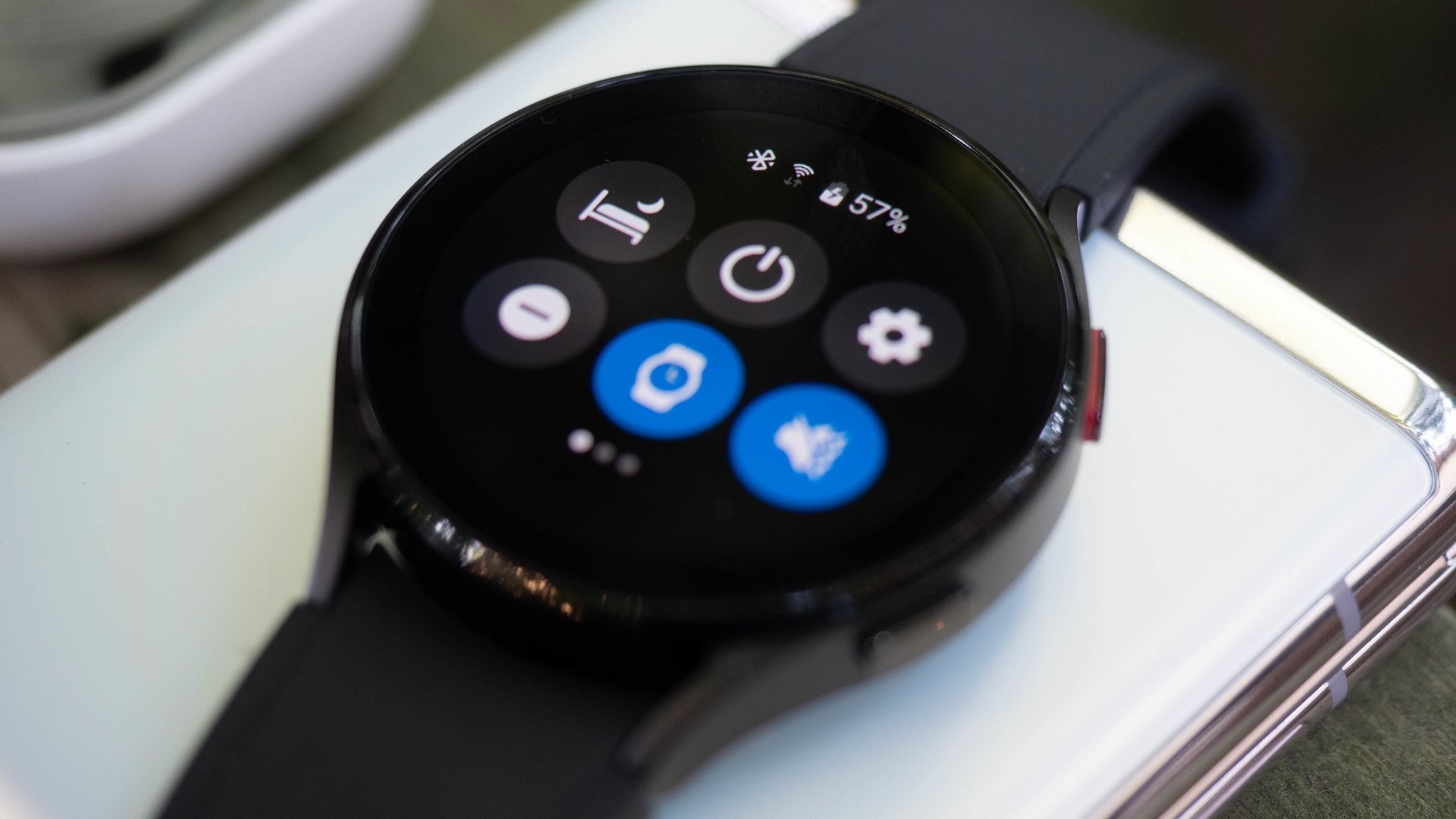
When Samsung announced the Galaxy Watch 4 and 4 Classic, it proudly proclaimed "up to 40 hours of battery life," which appeared to signal that it had solved the age-old problem of Wear OS watches needing to be charged daily. The good news is that the Watch 4 and 4 Classic, at least the larger sizes, do outlast every Mobvoi and Fossil smartwatch I've used over the past year. The bad news is that it's not by much, and certainly not enough to call the Watch 4 a two-day device.
Using the Watch as normal, with the always-on-display disabled but raise- and touch-to-wake enabled, tracking a workout, and regularly checking notifications, the watch lasted a day and a half without issue. Enabling the always-on-display didn't impact battery life that much, but enough to concern me about the next step, which is sleep tracking.
This isn't the multi-day watch you may be hoping for, but you can easily get away with wearing it all day, tracking your sleep, and charging it in the morning.
For three days, I used the watch normally during the day with AOD enabled. Then, I tracked a workout and went to bed wearing it to track sleep. When I woke up, I was in the low double-digits each time. So I put it on the charger while I got ready in the morning, and it had around 50% by the time I had to leave the house to take my kid to school. When I got back from the commute, I charged it up to 100%.
If you're the kind of person who needs a smartwatch to last multiple days, it's going to be tough to do here, but you can and likely will get more than 24 hours from it. The caveat is that I didn't engage the GPS at all, but I heard anecdotally from other people reviewing these devices that, as on other wearables, it destroys the battery.
The battery wouldn't be a concern at all, though, if the Watch 4 charged faster. Unfortunately, it takes nearly two hours to charge from dead to full, which means if you do wear it overnight and charge it while getting ready for work or school, you're only going to bring it up about 25%. So you'll need to buy another charger for the office or, once home, put it back on one to charge.
Bottom line: Samsung didn't do worse than other lifestyle brands here, but you'll need to upgrade to the Galaxy Watch 5 to get an extra burst of battery life beyond that 24-hour limit.
Samsung Galaxy Watch 4: Health features
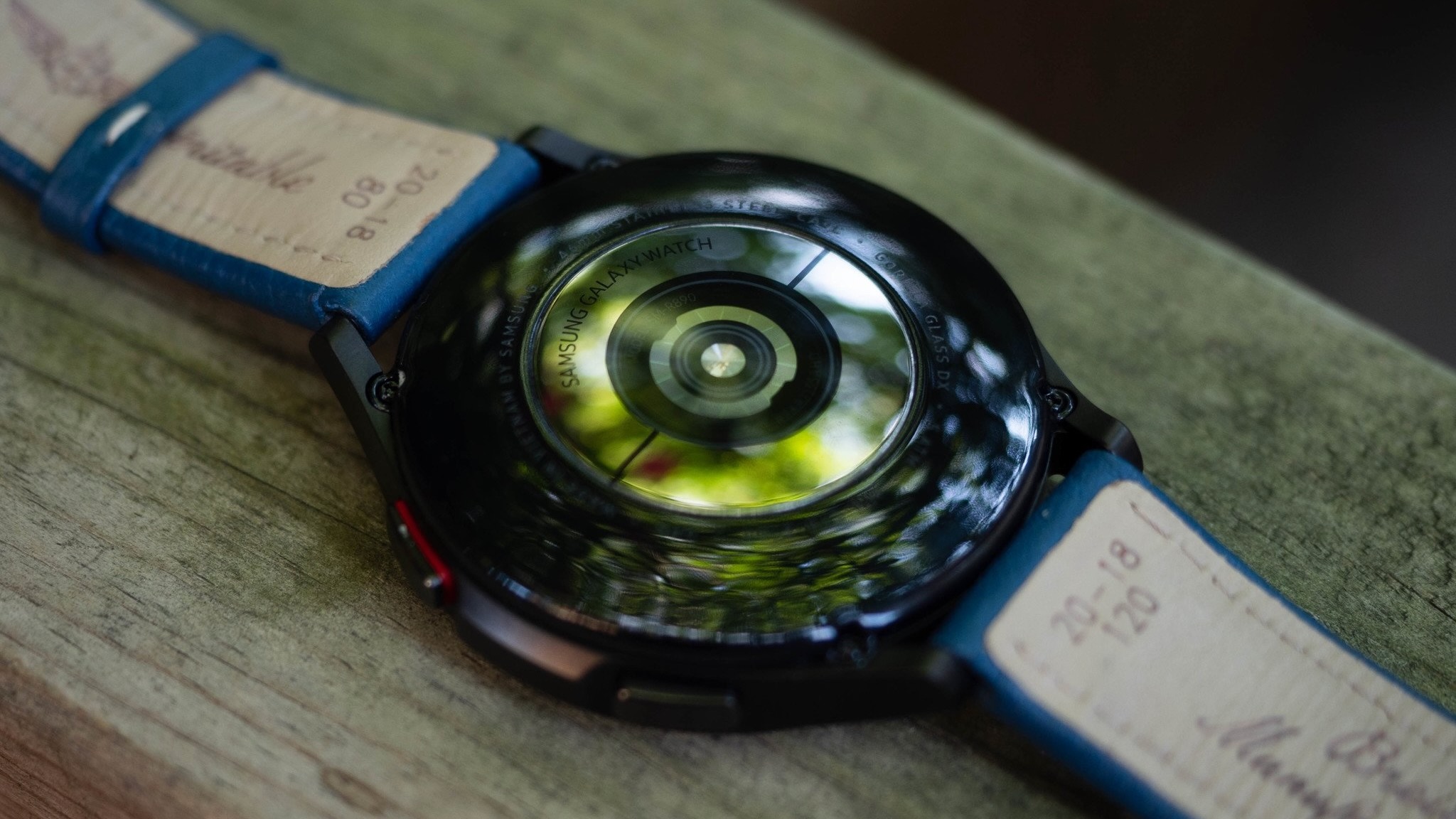
One of the Galaxy Watch 4's primary purposes — any smartwatch's primary purpose these days, for that matter — is tracking health, and Samsung Health pairs pretty nicely with Wear OS. Both variants and all sizes of the Watch 4 series have the same outlay out health features, including a 3-in-1 BioActive sensor that pulls off heart rate, blood pressure, ECG, and Bioelectrical Impedance Analysis (BIA for short), which is new to smartwatches but familiar to anyone with a connected scale.
I used the Watch 4 Classic and Watch 4 interchangeably throughout my week testing the series, the former paired to a Galaxy Z Fold 3 and the latter to a Pixel 5, trying to ascertain whether having a Samsung phone is actually an advantage. Aside from the Galaxy Store-exclusive Samsung Health Monitor app, which is required to take ECG readings, all health features, including BIA, can be done on the watch and synced to the Samsung Health app on Android (there's no iOS app this time around).
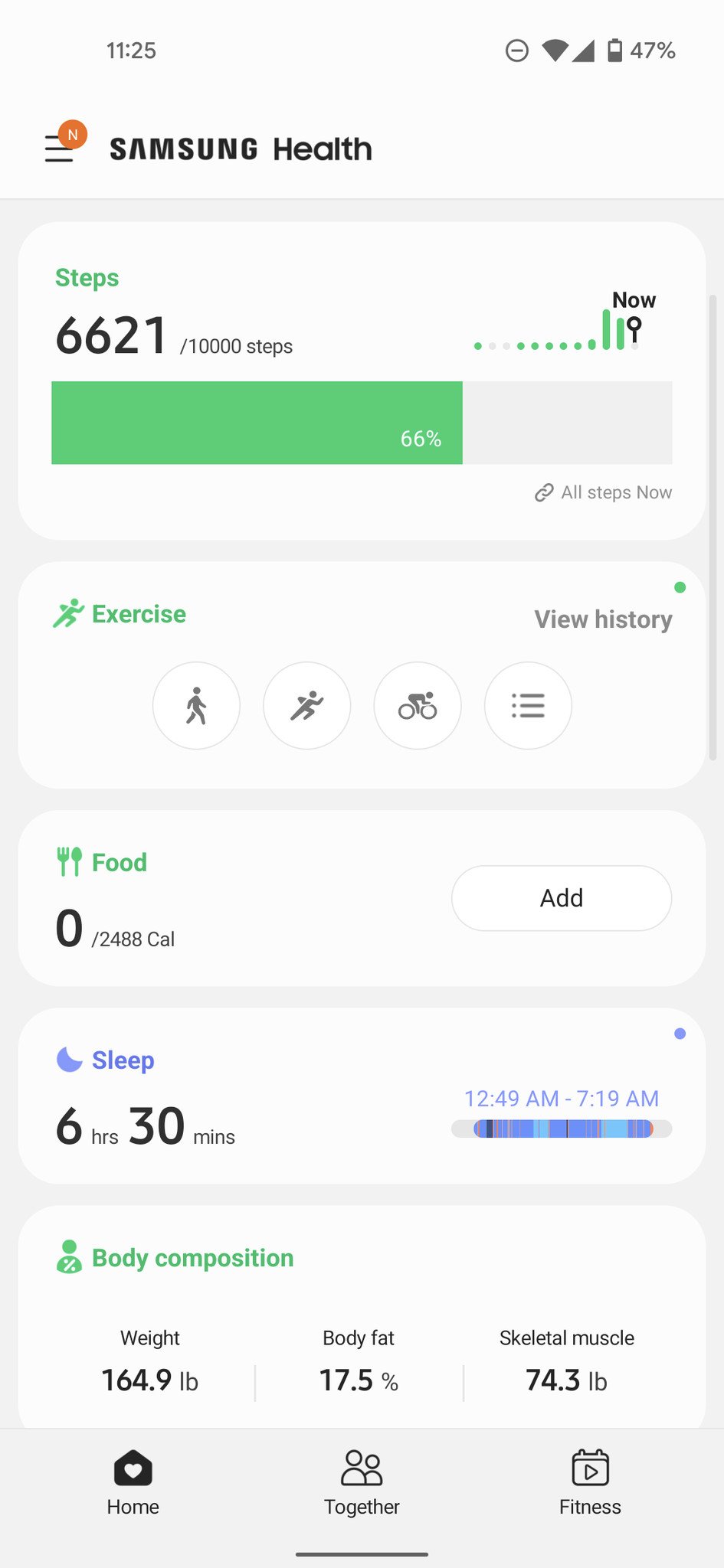
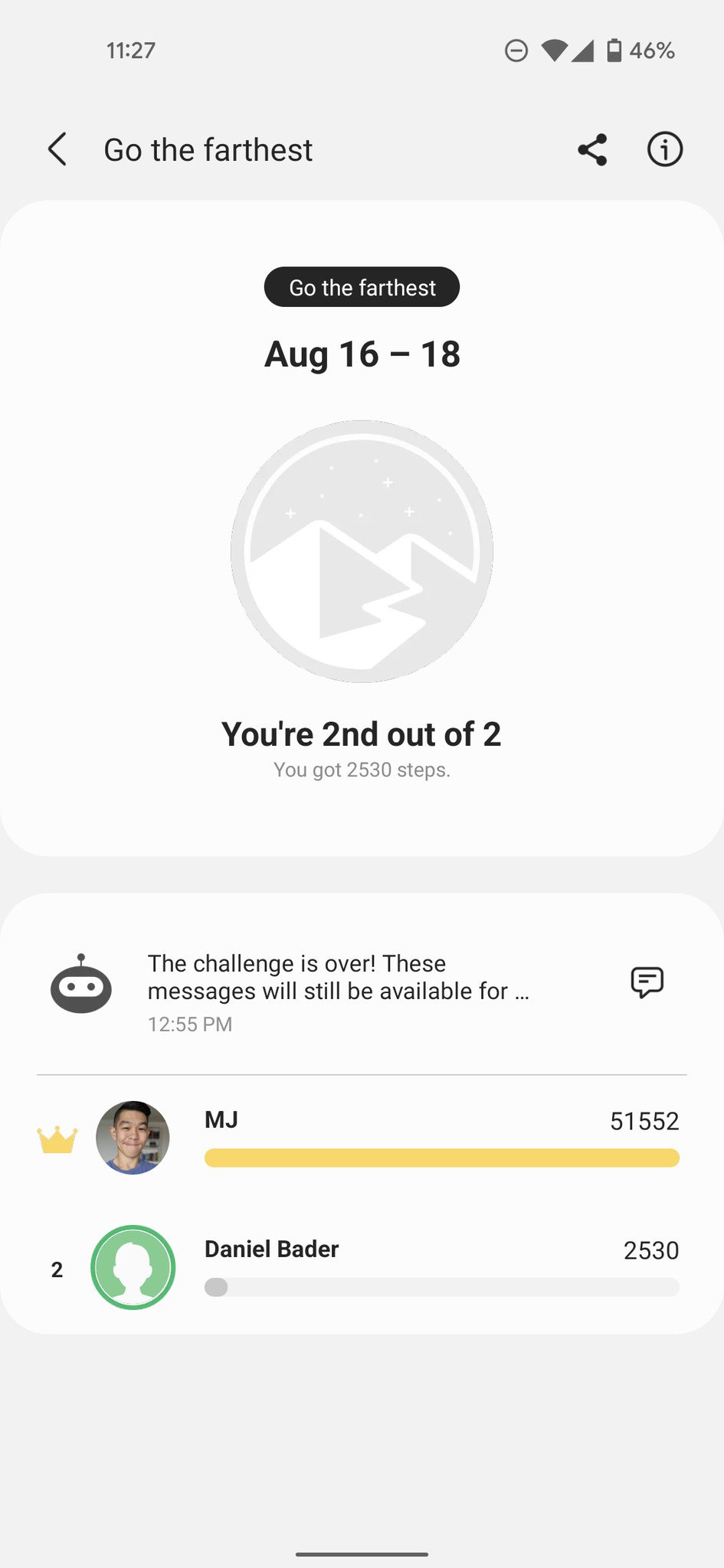


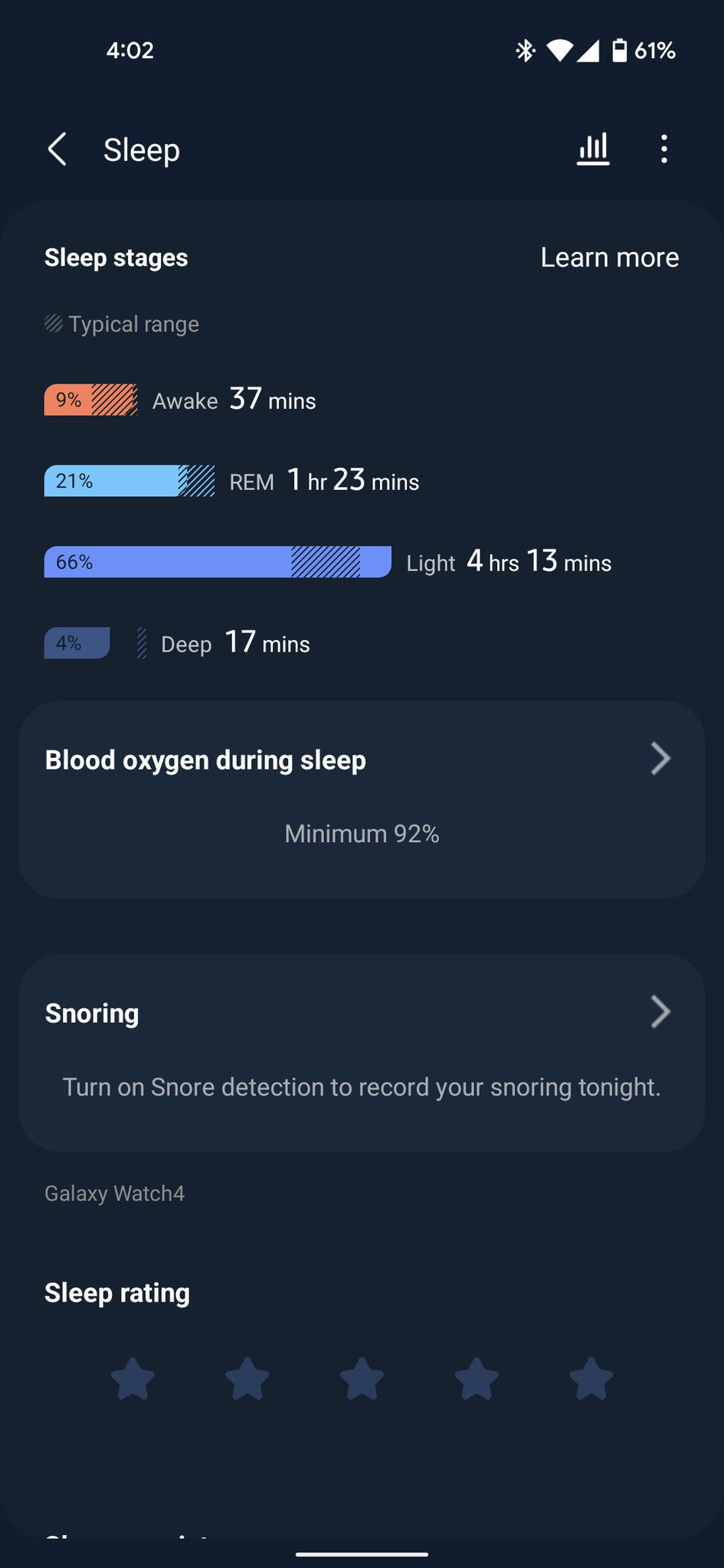



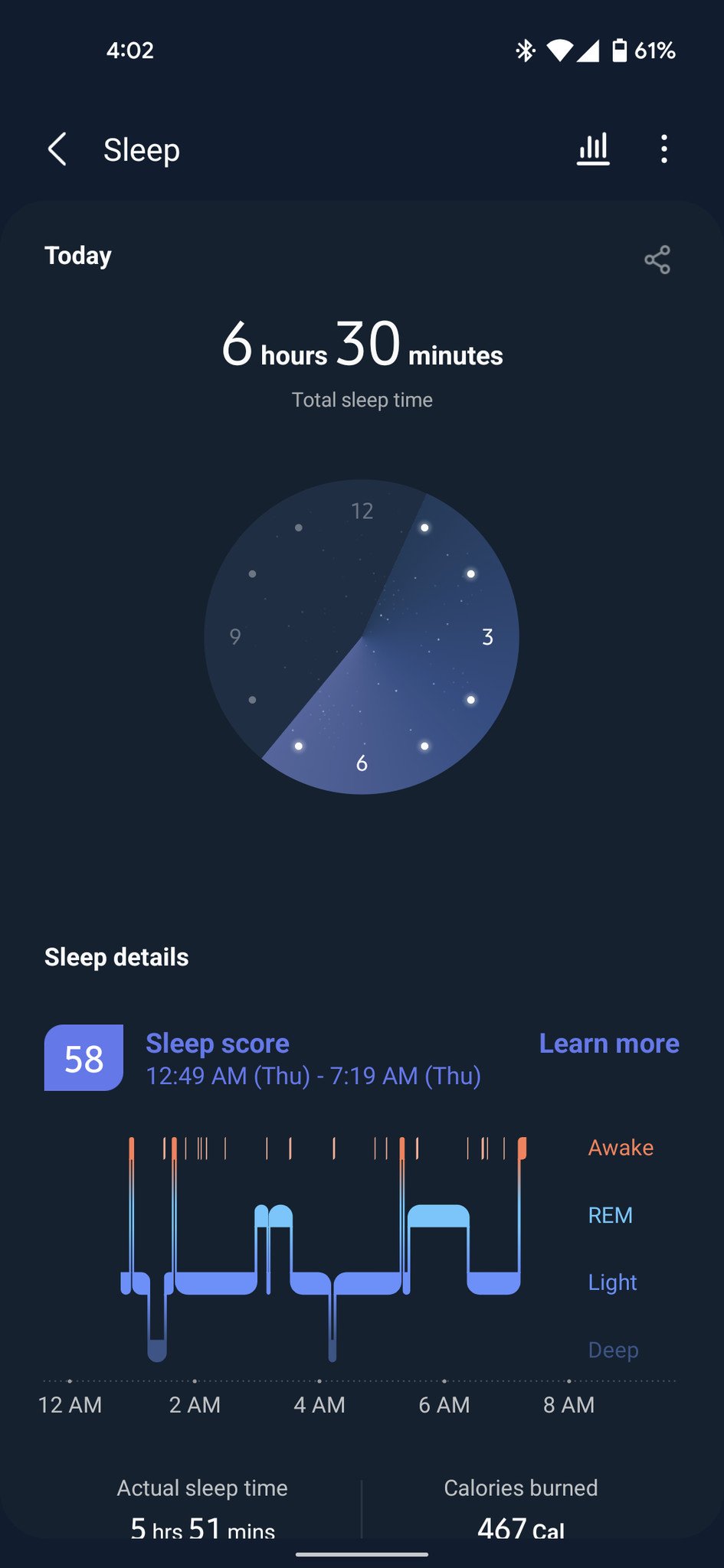
Working out with the Watch 4 is straightforward, especially if you're doing traditional stuff like running, biking, swimming, or rowing, which the watch automatically detects thanks to their distinct movements. Other exercises, like weight training, need to be selected manually. There are a lot of individual strength workouts, and a September 2021 update added a host of new workouts including circuit training. If you're a casual exerciser who just wants to track runs or count burned calories during a HIIT session, the Watch 4's sensors appear much more accurate this time around. And you can set target goals in Samsung Health like hitting a certain number of steps.
Over three nights, I used the Galaxy Watch 4 on my left wrist and one of an Apple Watch Series 6, Skagen Falster 3, or Fitbit Sense on my right to compare metrics as I did a high-intensity Supernatural VR workout, which I absolutely love and look forward to every day. (Side note: Supernatural uses a smartwatch app to feed live heart rate data into its experience and only makes it for the Apple Watch and Wear OS, so I'm pretty thrilled I'll be able to continue wearing the Watch 4 without having to throw on an Apple Watch every time I want to sweat.) On one night, I wore all four just for kicks and giggles.
I've never been particularly impressed with the sensors in Fossil watches and have had issues with Fitbits in the past, but the numbers I got from the Watch 4 appeared to be within a few BPM of the Apple Watch during every peak and valley. I didn't have the opportunity to test the GPS for its accuracy, though, but I'll update this review once things cool off outside and I can do some outdoor runs.
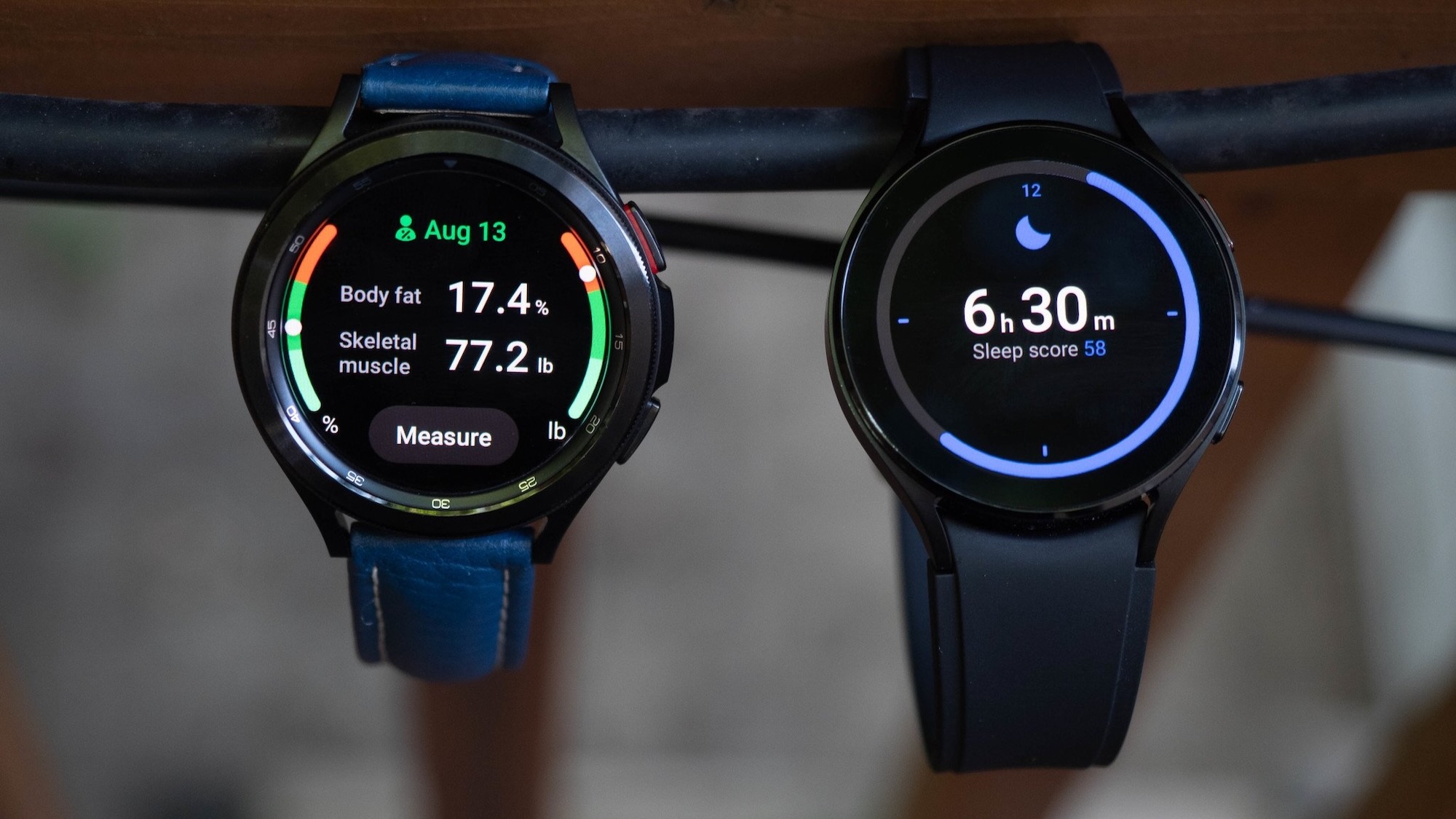
Samsung Health also includes a social element, which is severely lacking compared to its competitors. While it's still a developing feature waiting for a broader user base, there are only a couple of challenges you can issue to your friends, and they're both step-based. You can't compete for more holistic goals, like calories burned or minutes moved. When you win a challenge, you get no feedback or badges from Samsung to gamify the experience and promote further competition. It may seem like a small thing, but these little UX inclusions are precisely why Fitbit's and Apple's fitness ecosystems are so sticky.
While the BIA sensor on the Galaxy Watch 4 and Watch 4 Classic isn't as powerful as what is built into a standalone scale, it is a helpful addition to assist users in the health journey.
On the topic of BIA, which uses a weak electrical pulse to measure skeletal muscle and fat percentage in the body, I'm less interested in the tool's availability than the reason Samsung felt it was helpful to add it to a smartwatch, to begin with. Most BIA sensors are paired with scales, which first calculate your weight and then use that measurement as a baseline to figure out fat and muscle percentage, along with basal metabolic rate and overall BMI. The Watch 4 requires that you manually enter your weight every time you engage the Body Composition feature as a means of calibration; if you don't have a scale at home, the tool is mainly useless. If you do, it means weighing yourself before adding the extra step of using the BIA sensor.
Samsung has made some improvements to the Body Composition feature in the Galaxy Watch 4 series February 2022 update. In a partnership with Chris Hemsworth's Centr fitness program, the watch will provide even deeper insights into the readings from the watch.
For people who are into quantitative living, a smart scale, which features larger electrodes that are likely to produce more accurate results, is likely a better option. Wyze sells its smart scale for under $30; the industry-best option by Withings is under $100.
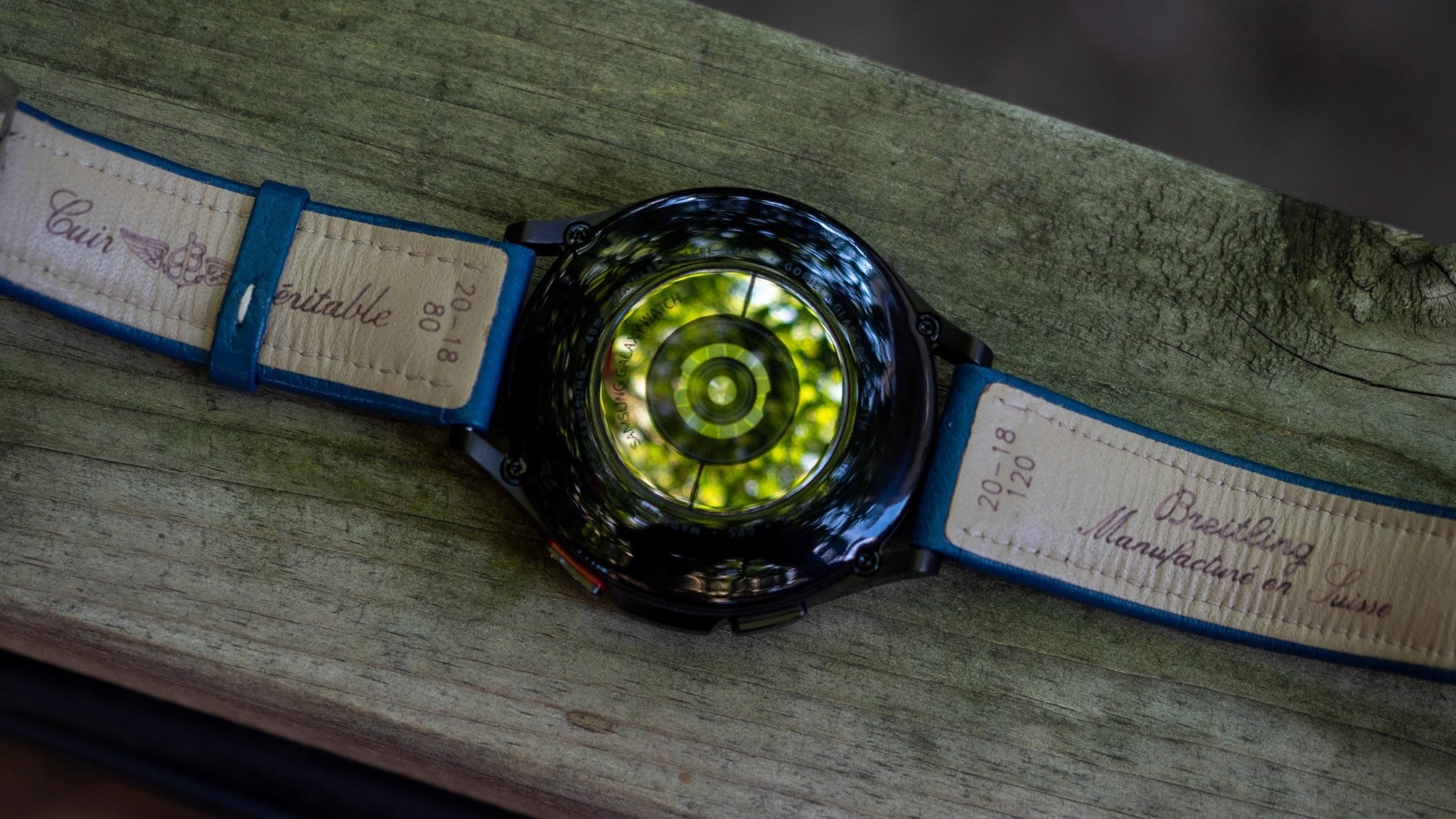
Conversely, the other concern I have is for people who may overuse or even abuse having such ready access to this data. Samsung readily admits that it can't and shouldn't be used for diagnostics, but given that a reading only takes 15 seconds, there's a genuine concern that those tracking weight loss may rely on it for trend data that can easily be manipulated by merely drinking a couple of glasses of water. As someone who struggled with weight loss in the past and used metrics like BMI and fat percentage as a bellwether for my success or failure, I think Samsung needs to do more to educate its users about the Body Composition feature rather than merely absolving itself of responsibility by adding a disclaimer to its press release.
Finally, the Watch 4 series tracks sleep and does it quite well. I wore it to bed a few nights in a row and compared it to the data obtained by my Nest Hub (2nd Gen), which has been passively tracking my sleep for months, and the "time asleep" and "time in bed before sleep" numbers were within a couple minutes of one another. Samsung also tracks the various sleep stages, including Light, Deep, and REM, and offers an overall score that can be tracked over time. The Samsung Health app also picked up a sleep coaching feature in the February 2022 update to suggest ways to improve your sleep habits.
Overall I'm pleased with the Galaxy Watch 4's fitness suite, even if elements of it don't cohere as well as they do on competing platforms. There's a lot of room to improve. Still, I also think being on a platform where newly-invigorated versions of Strava, MyFitnessPal, and others have access to the same sets of data that the Watch 4 generates, much of it richer and more accurate than on previous versions, Samsung's in a good place.
As a quick sidenote, if you compare this watch against its successor, the Galaxy Watch 5 was redesigned to place the sensors more directly on your wrist, which could lead to better results. It also added a temperature sensor, but Samsung has yet to activate its new sensor months after launch, so switching to the Galaxy Watch 5 might not be a priority for you.
Samsung Galaxy Watch 4: FAQ
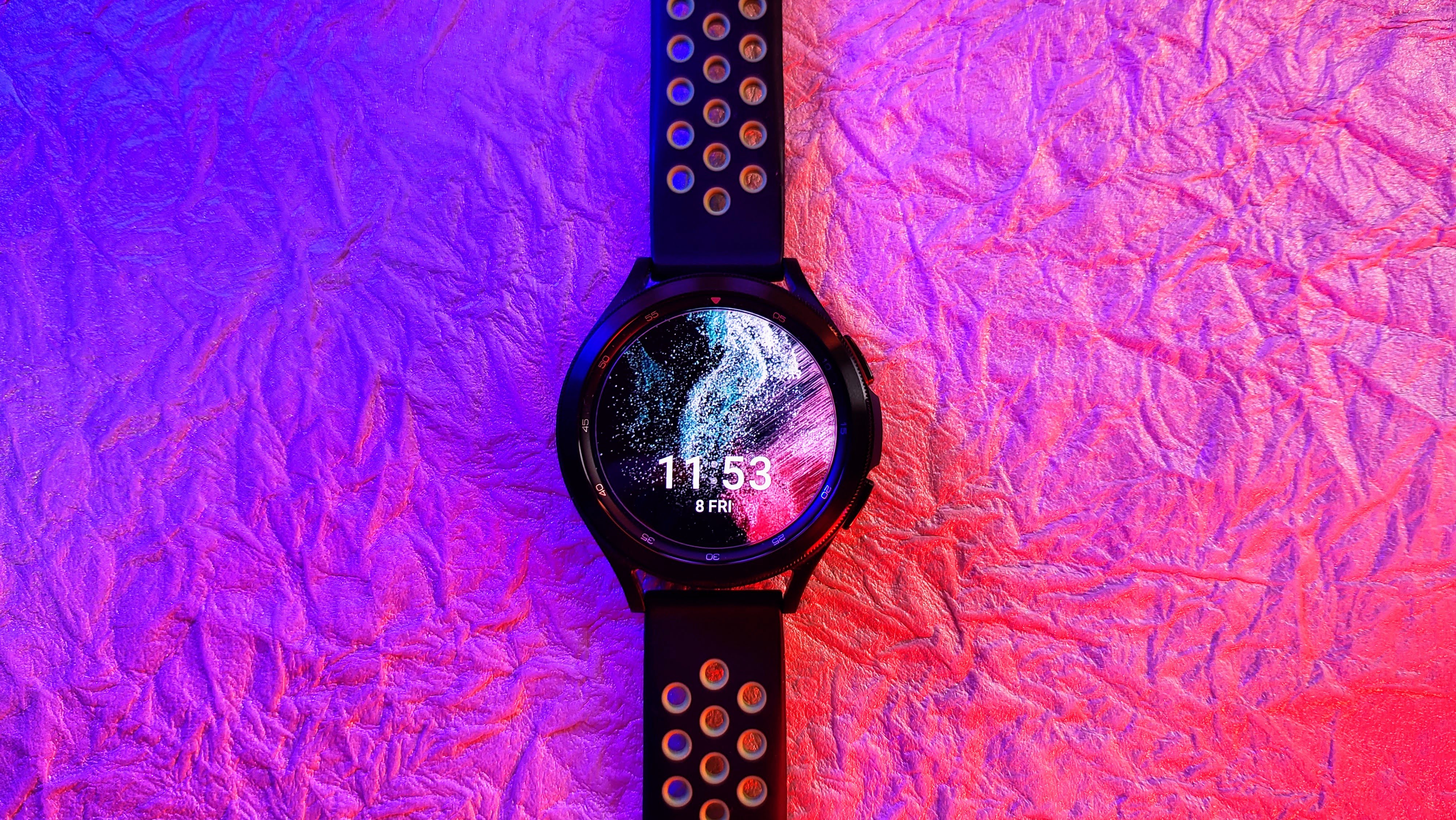
Should you buy the Galaxy Watch or the Watch 4 Classic?
When it comes to the Galaxy Watch 4 vs. Watch 4 Classic, I like the Classic a bit better. There aren't massive differences between it and the 4, but the inclusion of the rotating bezel alone makes navigating through Wear OS 3 considerably more pleasurable. When you're using your watch constantly throughout the day, that little bit of speed increase helps.
Does the Watch 4 support custom watch bands?
Yes, the Watch 4 and Watch 4 Classic both support 20mm bands. The lugs are shaped a little awkwardly, making it a little difficult to install third-party straps, but I haven't had any issues with reliability or comfort once they're installed. Just make sure the band you buy supports quick release. We've rounded up our favorite Galaxy Watch 4 bands if you need inspiration.
Can you charge the Watch 4 on any Qi charger?
So Samsung says that the Watch 4 supports WPC-based wireless charging, which technically supports Qi chargers. Unfortunately, the only chargers that will work consistently with the Watch 4, as with previous Galaxy Watches, are the ones sold by Samsung. You have the magnetic puck that comes in the box and Samsung's line of wireless chargers that have a dedicated spot for the watch. While there are some third-party wireless charging stands with dedicated Galaxy watch chargers that do work, they're prone to overheat, which can shut down or completely break your watch if you're not careful.
So, long story short: don't buy a small Qi wireless charger expecting it to work with the watch. If it doesn't have Samsung's name on the box, it probably doesn't work, though if we find any worthwhile replacement chargers, we'll let you know.
Samsung Galaxy Watch 4: Competition
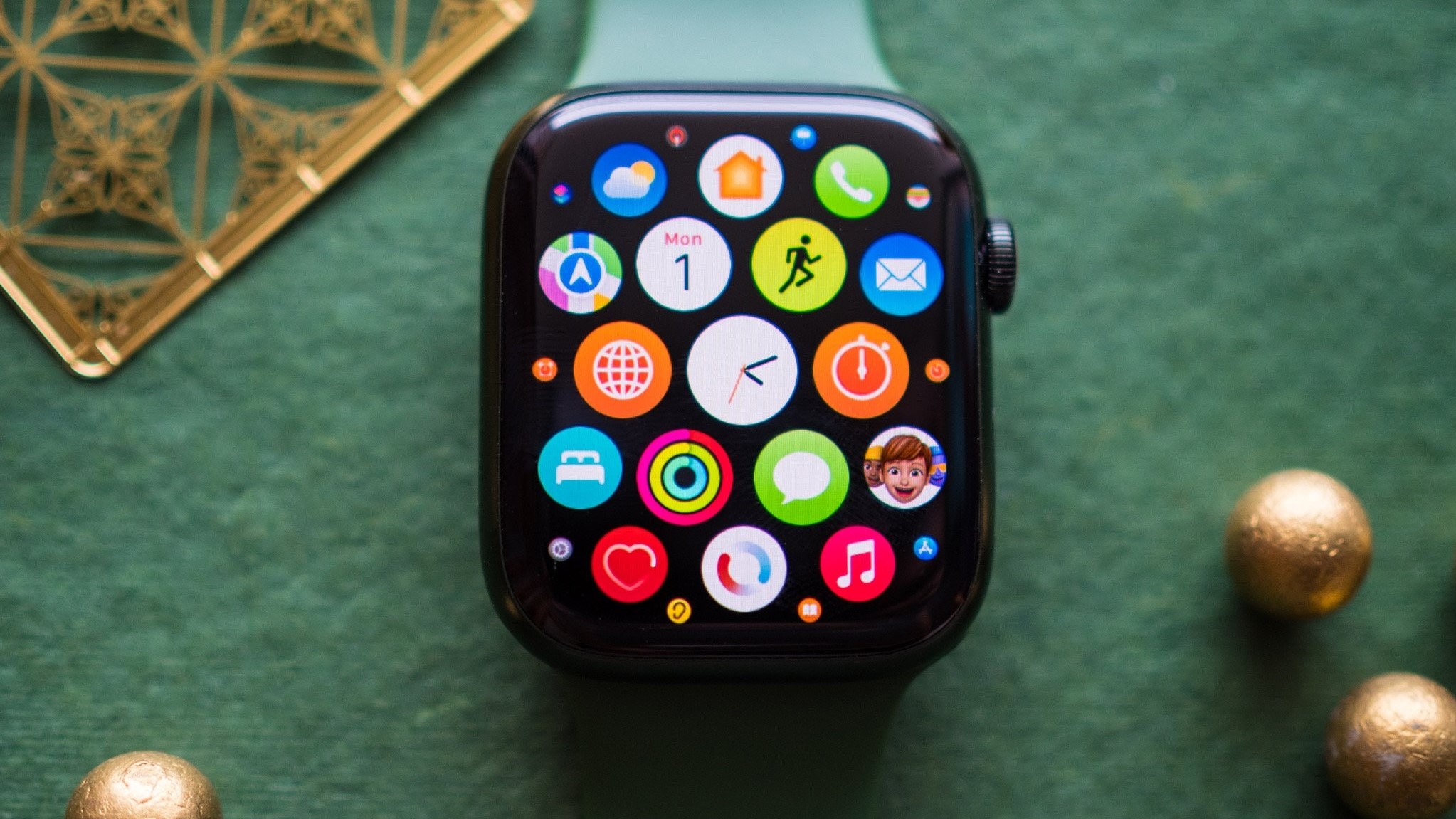
If you have an iPhone, the Galaxy Watch 4 isn't compatible with iOS due to its switch to Wear OS, and has some features that are exclusive to Samsung phones. So if you want the best smartwatch experience on an iPhone, your obvious choice would be the Apple Watch Series 8. But for Android users, you have a wide range of options.
Aside from the Galaxy Watch 5 and Watch 5 Pro, the Watch 4 is unmatched by most other Wear OS watches. While we like Fossil and Mobvoi watches, they do have the downside of using Snapdragon Wear chips, which aren't necessarily bad but lack the same support and attention given to Samsung and Google's Exynos chips. For instance, since switching to Wear OS 3, Fossil watches can't use Google Assistant until Google adds support for the app to Qualcomm-based hardware.
If you care more about health tracking than smart features, you could look into the Fitbit Sense 2. It has most of the same sensors as the Galaxy Watch 4, missing the BIA sensor but including a temperature sensor and cEDA sensor for continuously monitoring stress levels. It also supports a couple of Google apps, but is otherwise quite limited.

Of course, if you want Fitbit tools and proper Wear OS software, you'll look into the Google Pixel Watch. It closely syncs with your Android phone and provides all of the most popular Google apps, which are much more important to many users than Samsung apps. It has Fitbit Premium integration for better health and fitness insights than Samsung Health can provide, though it'll cost you extra. Although it has an older chipset found in the Galaxy Watch 3, it has an extra 0.5GB of RAM and double the storage space for apps. And unlike the utilitarian look of the Galaxy Watch 4, the Pixel Watch has an attractive edge-to-edge look.
The Galaxy Watch 4's biggest competitor is the Galaxy Watch 5, since it improves on some of the older watch's flaws. It adds a larger battery, faster charging, Sapphire glass for better scratch protection, and a new temperature sensor (though Samsung has yet to activate it). Unfortunately, the extra battery and sensor do lead to it being thicker and heavier than the 4, but the Galaxy Watch 5 does have a slight redesign to make the sensors sit more securely on your wrist for better data accuracy.
Samsung Galaxy Watch 4: Should you buy it?
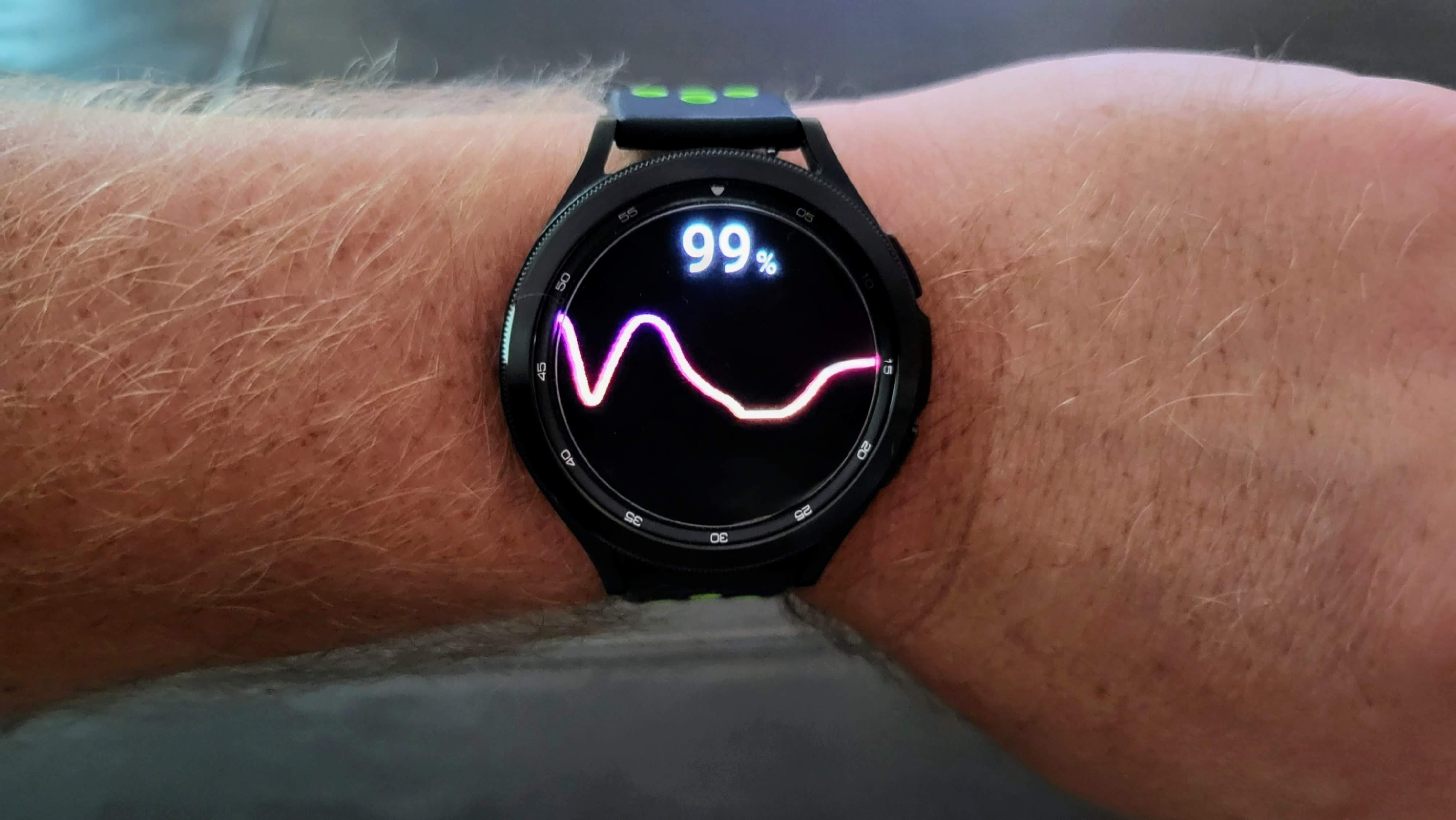
You should buy this if ...
- You have a Samsung smartphone
- You want the best smartwatch experience on Android
- You are active and want to track your workouts or sleep
You shouldn't buy this if ...
- You want a Google-first smartwatch experience
- You want multi-day battery life
- You want to challenge your friends to activity contests
If you're looking for a smartwatch on Android right now, I highly recommend the Galaxy Watch 4 or Watch 4 Classic, despite their age. However, they're by no means perfect, and the clunky elements of Wear OS 3 on Samsung's wearables betray a tension between its desire for ecosystem lock-in and its investment, with Google, in furthering an Android-first wearables platform.
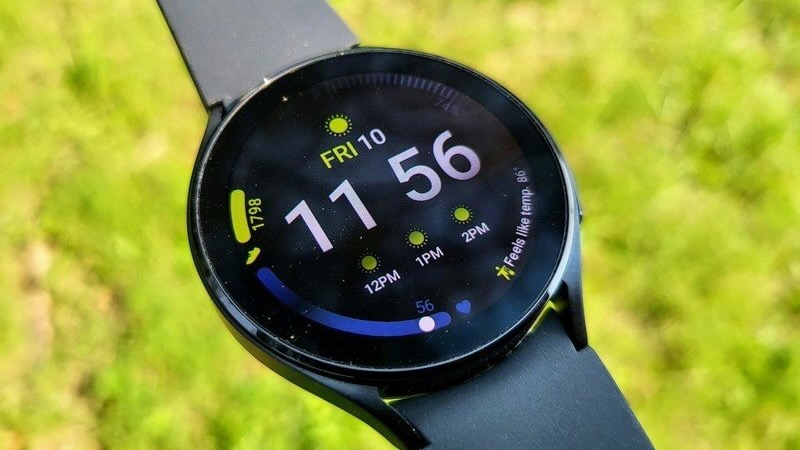
Even if you're not a Samsung smartphone user, there's a lot to like here — you can ignore Samsung Pay and use Google Pay, for instance, keep your Bixby interactions to a minimum, and embrace Samsung Health since it's currently far better than Google Fit.
Samsung's hardware design doesn't take a lot of chances, and the cheaper Watch 4 is actually pretty boring, but both watches are well-built, have intuitive controls, and, most importantly, perform like a dream. Plus, the Galaxy Watch 4 Classic may be your last chance to enjoy the physical rotating bezel, since the Galaxy Watch 5 left it behind. It's both stylish and functional.
If you can spring the extra $100 for the Classic, I'd do it, but either way, you're getting the best Android smartwatch available today — even if the previous bar was pretty low.
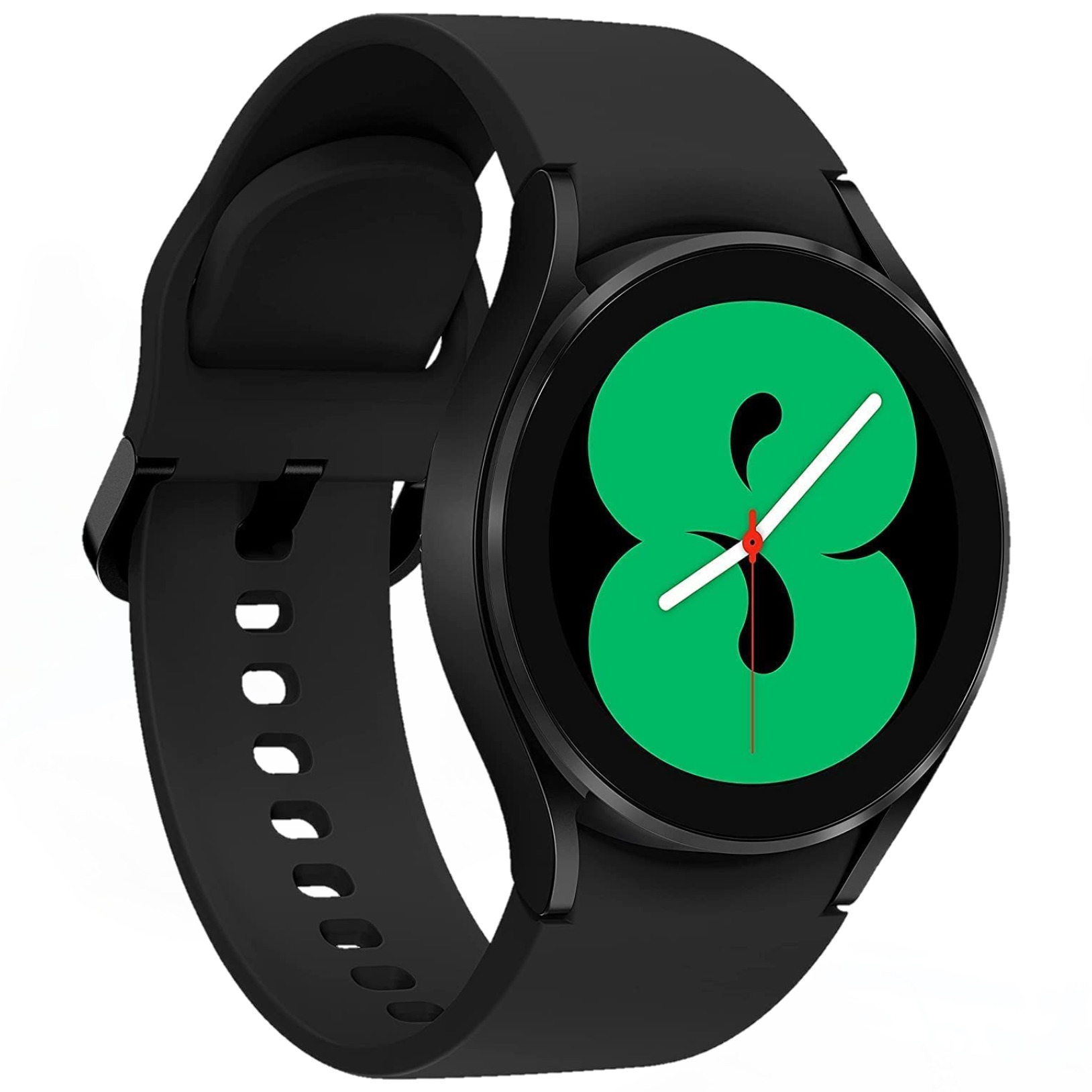
Affordable and feature-packed
The Galaxy Watch 4 is packed with advanced features like body composition analysis, ECG reading, and so much more, into a lightweight aluminum case making it the perfect fitness companion.
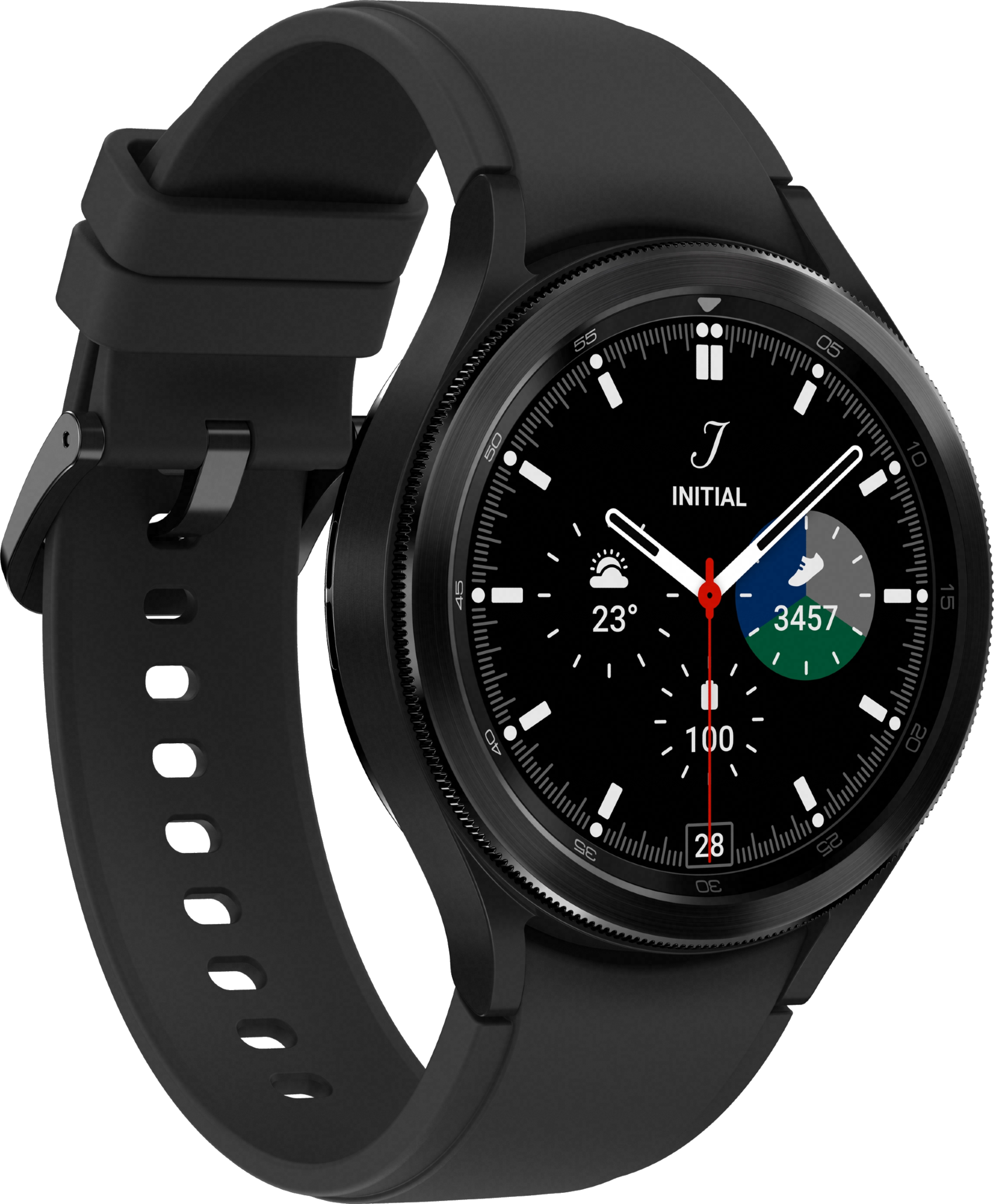
Give it a spin
The Galaxy Watch 4 Classic is the watch for those that want a more traditional-looking smartwatch, but don't want to miss out on the most advanced fitness tracking and health monitoring features.
Review Changelog
This review was originally published in August 2021. It was updated December 2022 with the following changes:
- Rewrote introduction.
- Added more information about new pricing and limited availability.
- Added more info about Galaxy Watch 5 as a competitor, and added Fitbit Sense 2 to Competition.
It was updated October 2022 with the following changes:
- Added mention of One UI Watch 4.5
- Added more information on new Galaxy Watch 5 and how the older model compares.
It was updated July 2022 with the following changes:
- Cleaned up errors and added missing text caused by transition to new website.
- Added Galaxy Watch 5 and Pixel Watch as future competition.
- Mentioned new addition of Google Assistant as Bixby alternative.
It was updated March 2022 with the following changes.
- Changes to the Galaxy Watch 4 series in the February 2022 update.
- New watch faces.
- Improved sleep coaching and more body composition insights.
- Notes regarding the upcoming Google Assistant and YouTube Music streaming functionality.
The review was updated in October 2021 with the following changes.
- Updated price and availability section.
- Included information regarding the Thome Browne Edition
- Added mention of the new Maison Kitsuné edition.
- Added a changelog.

Daniel Bader was a former Android Central Editor-in-Chief and Executive Editor for iMore and Windows Central.

